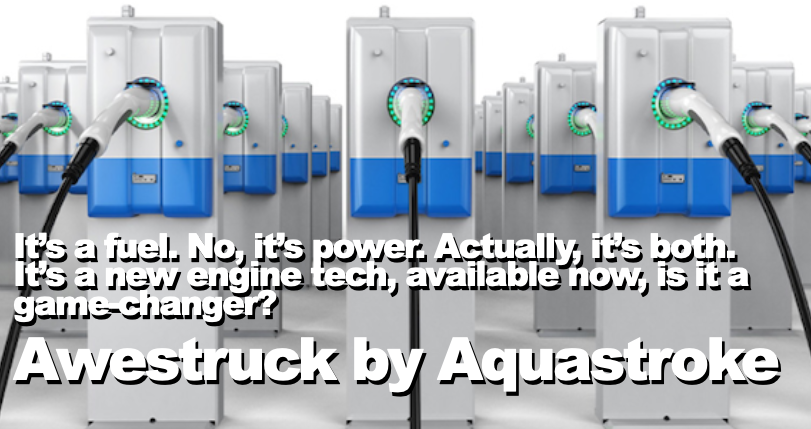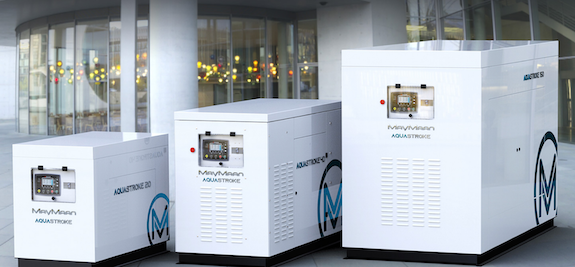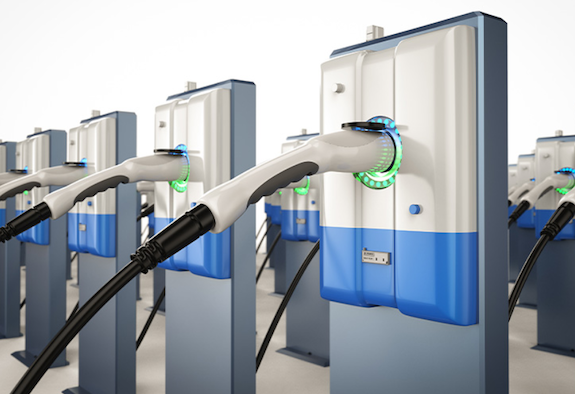Awestruck by Aquastroke: a new engine and its ethanol+water fuel

A very interesting technology has come to our attention, worth a serious look, it’s a new attack on an old idea, which is the production of affordable energy using s combination of 70 percent water and 30 percent ethanol, in this case using the Aquastroke engine as developed by Maymaan.
So, what is it? More or less, it is an internal combustion system where, as the patent holders mention here, “advantageously. the fuel consists essentially of water and a flammable substance.” The flammable can be any alcohol, acetone, aldehyde, so long as it is soluble in water. The engine runs on any combination of 10-40% of the flammable, and can be adapted to any rotary or jet engine — not limited to a piston approach, which is the one we have seen. More on the patent background here.
The basic principle? Mixing hydrogen and air with a solution of water and a flammable fuel, compressing it to create an explosive mixture, then igniting. The hydrogen source can be the water itself, using electrolysis to produce brown gas (a hydrogen-oxygen mix, or H2/O2). Now, it will probably be up to the Due Diligence Wolves to add up the cost of the energy inputs and the value of the energy outputs. One thing we can say for sure, the system works, we’ve seen the demonstration model. Here’s an image.

An important point of differentiation with conventional engines
Most gasoline engines operate as low compressions, say 8:1 to 12:1, couple of exceptions on the high end, not many, Diesel engines run at higher compressions, anywhere from around 14:1 to as high as 25:1. This Maymaan engine runs at even higher compression — optimally 30:1 and can run at as high as 40:1. As engine fans know, the higher the compression, the higher the efficiency of the engine — one reason (not the only) that electric motors are more efficient than IC engines is the low compression at which most IC engines run. So, let’s note that.
Applications: Stationary backup power
For sure, this fuel and engine system, as the investors aver, works for aviation, marine and road transport. We’ll probably get to that in a future column, We see the immediate appeal and application in stationary power generation. This reaction can power a turbine and generates electric power. We see this as having vast and almost immediate potential compared to say, a diesel generator. For one, a 70/30 mix of water and ethanol is more environmentally friendly; essentially, it’s like watered down tequila. Second, the compression ratio is impressive and that means diesel-like fuel efficiency without actually using a diesel fuel.

Importantly, the engine can be operated remotely using sensors, so that it has the on/off capabilities that we associate with and love about diesel back-up generators. We love this idea for cell tower power supply — nice back-up system for small offices. Bypasses a lot of questions about battery tech and cost. plus, the fuel is going to be darn cheap — think way, way less than a buck a gallon.
The company advises, “MayMaan Generators are more powerful, quiet, cleaner than any other internal combustion engine-based system, while substantially reducing operating costs.The benefits of our unique system and combustion cycle can be fully utilized in power generation systems and prime power or standby generators. As our engine produce outstanding torque between 1500-1800 RPM it is ideal for 50-60Hz power production.”
Comes in three sizes with different target markets.
AQUASTROKE 40: 20 KW generator – designed specifically for telecommunication antennas and facilities. General Specs: 20KW, 208-400V AC one or three phases – 1.4L 4-cylinder, 16 valve engine running at 1800 RPM
AQUASTROKE 40: 40 KW generator – this product is designated to run small factories and to be used in remote and rural area, also as a backup generator domestically. General Specs: 40KW, 208-400V AC one or three phases – 2.0L 4-cylinder, 16 valve engine, running at 1800 RPM.
AQUASTROKE 150: 150KW generator – Targeted to replace large prime power diesel based gensets, this generator will have paralleling, phase matching capabilities. General Specs: 150KW, 208-440V three phase – 6.2 8-cylinder, 16 valve engine running at 1800 RPM
Full space: voltage requirement, governor specs, electrical system, enclosure, alternator and controller options, are here. https://maymaan.com/generators/
Applications: EV charging
The company advises: “Aquastroke equipped gensets provide a great solution to most issues associated with the installation and operation of Level 2 and DC fast charging stations. They provide on-demand power on or off the grid to charge multiple vehicles. This is all without the load on the grid, the wait for utility power access, and the high expense of conventional non-renewable power.

Two sizes for this application, the MODEL AS40 provides power to 3 x 11kw level 2 or 1 DC 30Kw fast chargers. The MODEL AS150 provide power to 12 x 11kw level 2 or 4 DC 30Kw fast chargers
Brown gas, we’ve seen it before
There’s been work on brown gas before, mixes of hydrogen and oxygen in the presence of a spark do combust in a lively manner, as The Hindenburg famously illustrated. More controlled experimentation to try and make something out of brown gas as a fuel source have come to not much over the years.
We’ve also seen ethanol and water as a fuel base before. Anyone familiar with Brazilian ethanol success story knows that it is roughly an 85/15 combination of ethanol and water, and runs very well — has a higher freeze point which makes it not suitable for the US and Europe, unfortunately. But it burns just fine.
What we haven’t seen any time recently (or ever) is an attempt to put brown gas together with a super-hydrous ethanol. And, more to the point, Maymaan technology isn’t really about the fuel, it’s about the engine design, this is an engine company. The advantaged fuel is a consequence of the design. The attempts we’ve seen to use ethanol, water or brown gas in novel ways don’t usually have a robust engine design available to capture the opportunities in the fuel mixture. Making this one very interesting development on the stationary power front, right now.
The Bottom Line
This system, hands down, is the most interesting fuel+power approach we’ve seen come down the pike-way in the last 15 years. Potential users should always study local costs and souring of fuels and inputs prior to purchasing. If you find yourself in a town where ethanol is a thousand bucks a gallon for some crazy reason, this approach isn’t going to pencil out. We also might point to sourcing the lowest CI alcohol you can find, and if you think we’re pointing towards oxidizing carbon-negative dairy-based RNG to make methanol, you’ve guessed right — having carbon-negative fuel could make this one of the lowest cost and environmentally-beneficial fuels. There’a few maybes in there, so let’s leave that as a suggestion and not a conclusion.
Having said that, yes, it starts up reliably and quickly, runs continuously, and whether the gases are driving a piston for IC-based mobility, or driving a turbine to generate power for stationery applications or EVs, it’s fascinating crossover between fuels and power. Product of the Year? For any customer sourcing carbon-negative alcohol fuels and replacing battery tech and diesel generators, probably that’s what they call this one. Or, as they might say in Jamaica, Maymaan, ya’mon.
Category: Top Stories















